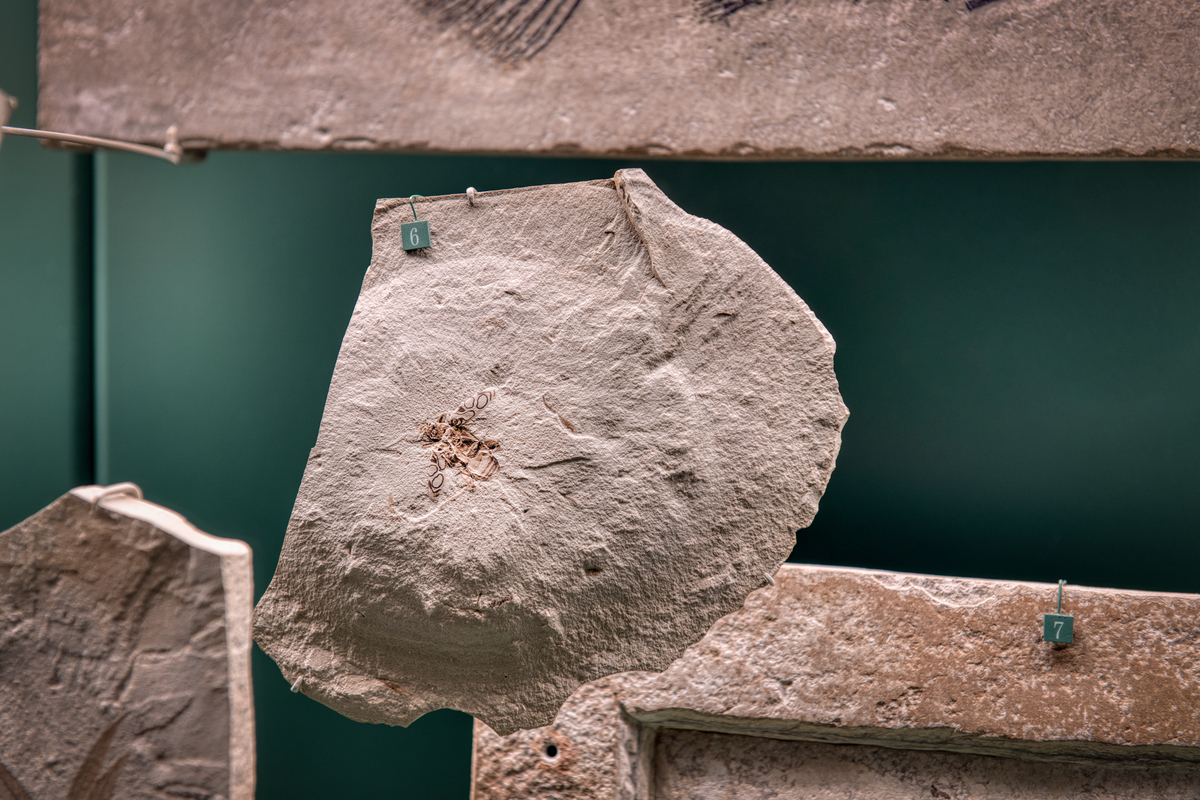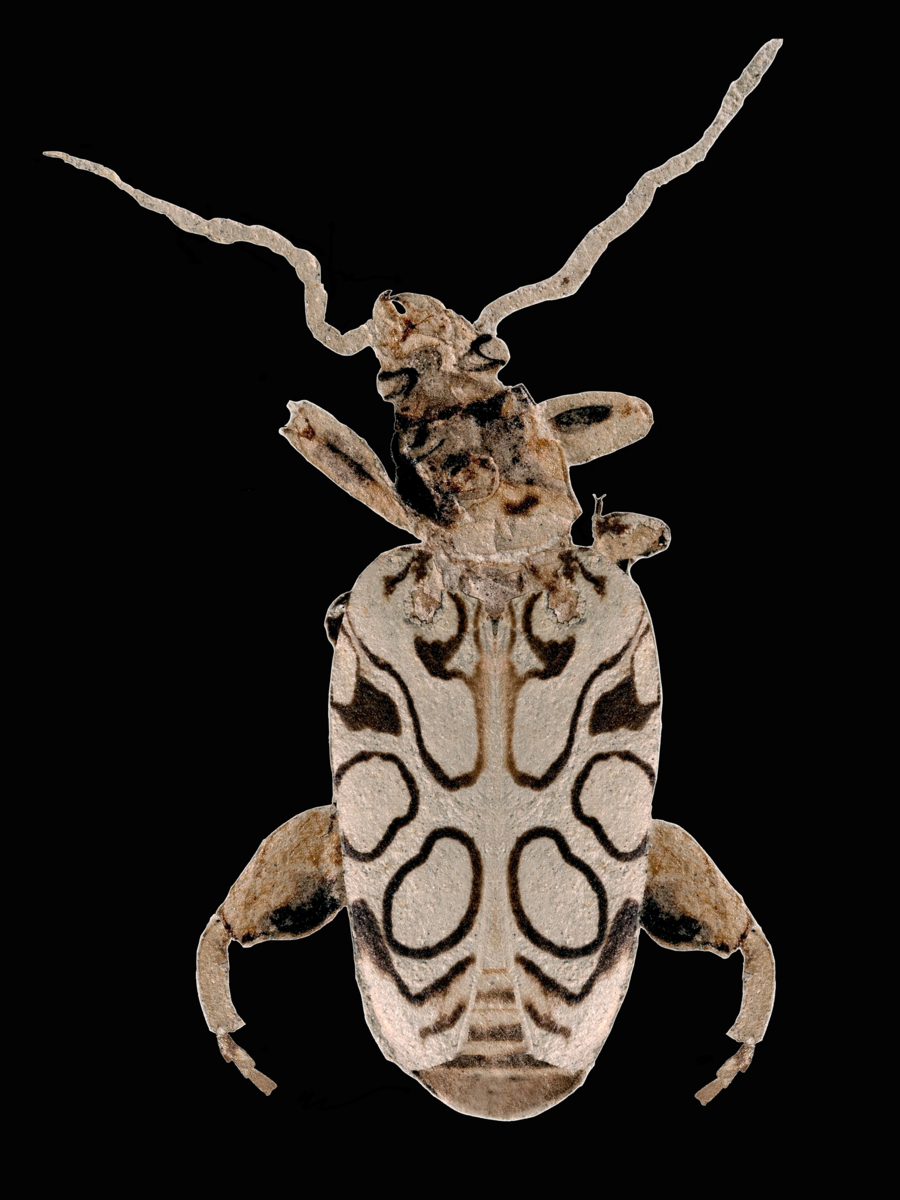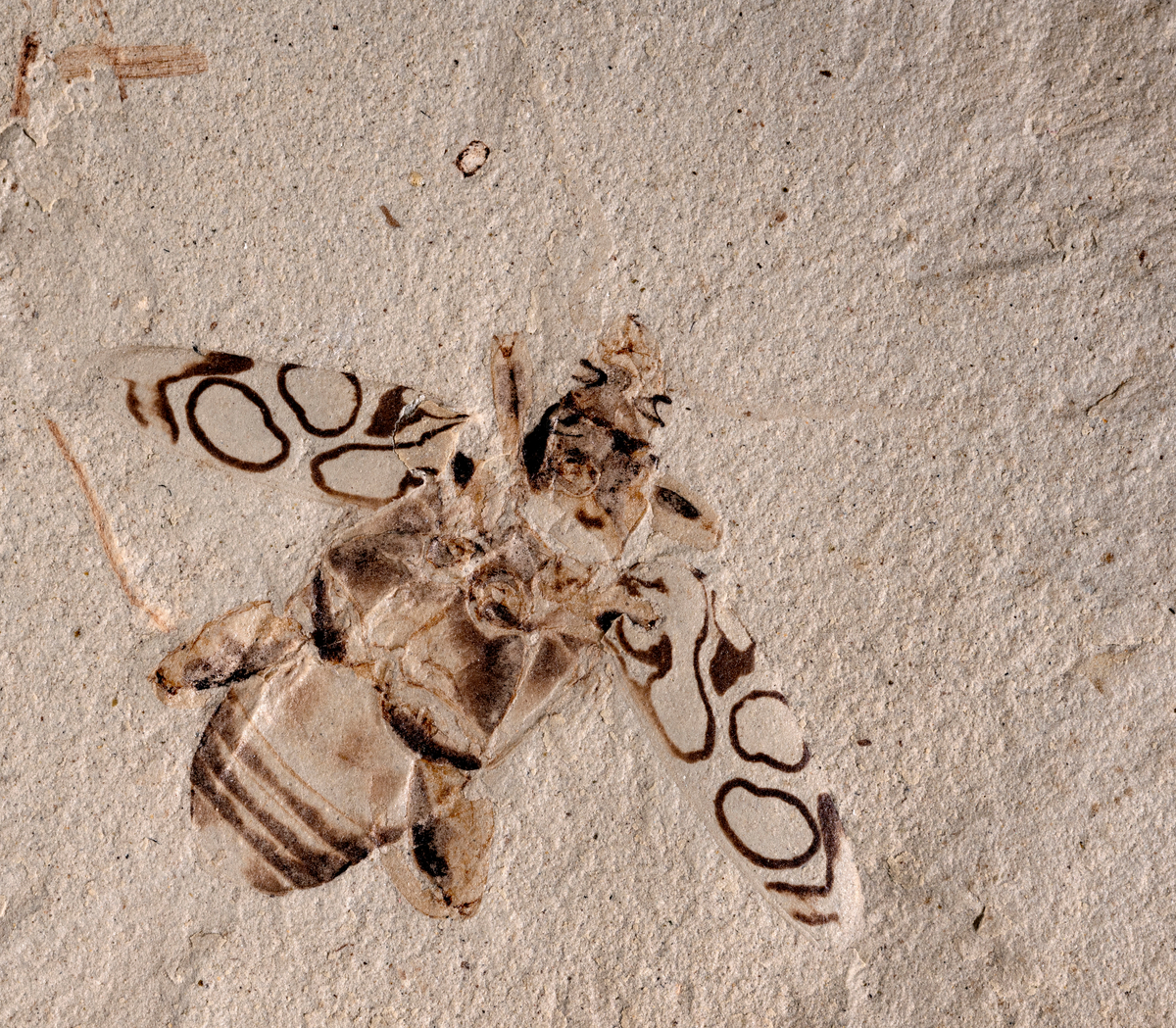It seems to me that the natural world is the greatest source of excitement; the greatest source of visual beauty; the greatest source of intellectual interest. It is the greatest source of so much in life that makes life worth living. — Sir David Attenborough

Museums are treasure troves for discoveries. Science staff and colleagues from near and far study your research collections of 4.3 million specimens and discover new things every year. But on exhibit? Can scientific discoveries be made in our exhibitions?
It just happened.
Decades ago, exhibition developers included a fossil beetle in “Prehistoric Journey,” which opened in 1995 and was in the planning process for years before that. Its picture even appeared in two books, the Museum’s Prehistoric Journal book, long out of print, and a scientific publication on the Green River Formation. The specimen turned out to be a new species of frog-legged leaf-beetle, and one of the most magnificent beetle fossils ever found.

Pristine Preservation
Beetles are sturdy little animals when they are alive, but they do not easily fossilize as a whole beetle. They float on water, and when they sink and reach the sediment, they often fall apart. In the fossil record we frequently find single wing cases. Or if we find beetle bodies, they are lacking parts or are preserved as dark blotches, like beetle roadkill on the pavement.
Some deposits with a fine-grained sediment and particularly favourable conditions provide us with very well preserved, often almost complete fossils. These deposits are called lagerstätten—one of the few scientific terms of German origin. The Eocene Green River Formation in northwest Colorado is one of them.
Over 30 years ago, late Grand Junction geoscientist, Richard Dayvault, found a 49-million-year-old beetle fossil at Douglas Pass in Garfield County that stood out from the crowd straightaway. It had unique circular patterns on its wing cases preserved in unsurpassed clarity and contrast. In terms of pattern preservation, it is probably the best-preserved beetle fossil ever found.
Identification Please
I initially struggled with the identification of this specimen. The books I consulted and even the exhibit labelled this creature as a longhorn beetle. Even though it looks like one, not all the features were a fit. So I joined forces with a longhorn beetle expert from the National Museum of Natural History in Luxembourg.

We looked at all the details preserved. Its crooked legs—or in scientific words, its curved hind tibiae—gave away its true identity: It is a frog-legged leaf beetle. We have plenty of leaf beetles in North America, such as the Colorado potato beetle, but frog-legged leaf beetles are long extinct on our continent. In South America, there are two living species, but today the majority of species live in Africa, Asia and Australia. Earlier this year, another (much less attractive species) of this group was discovered and described from the Green River Formation. It seems frog-legged leaf beetles liked the warmer and more humid climate in the Eocene more than the current conditions in Colorado.
What’s in a Name?
How to name such an extraordinary fossil? A scientific name consists of two components, a genus and a species name, like Homo sapiens, which is us. The beetle needed a new genus name, because it did not fit in any existing frog-legged leaf beetle genera. Because of its beauty, I chose the name Pulchritudo, which is Latin for beauty. It is a newly discovered species, hence needs a specific name, too. Zoologists and botanists often dedicate new species to colleagues who have contributed significantly to science, or to people who are special to them. One person immediately came to mind. Sir David Attenborough, English broadcaster and naturalist, has been inspiring us, our families down to the littlest, and millions of others by his unsurpassed documentaries on the natural world, extant and bygone. Nobody imparts the grandeur and beauty of nature more impressively than Sir David. This fossil, unique in its preservation and beauty, is an apt specimen to honor the great man. It is called: Pulchritudo attenboroughi, or Attenborough’s Beauty, and can be seen in Prehistoric Journey, in “The Cenozoic Era” section.


See Pulchritudo attenboroughi for yourself in the Cenozoic Era section of “Prehistoric Journey” on the third floor of the Museum.
One More Thing
When Krell isn’t busy describing new species, he serves on the science advisory team for the Museum’s Future First strategic initiative.
Since the beginning of the Future First Initiative, science has been at the heart of the development process. Early on in our feasibility phase, we worked with thousands of people to ask, “What are you curious about that we don’t already do?” Out of this endeavor, 13 strong themes emerged representing what piqued our community's interest the most. These scientific themes have become a foundation for all Museum exhibits and programs going forward, and serve as the catalyst for science content in the new first floor experience.
To narrow down the scientific content during the early design phase of Future First, a science advisory team was convened and serves as consultants and advisors. This team consists of Museum curators, collections managers and a science journalist.
We held two workshops to bring the science advisory team together with writers, exhibit designers and community advocates. The goal of the workshops was to utilize those 13 scientific themes and find the most compelling stories we could tell. Four compelling narratives emerged from these workshops:
We all need to eat. Explore how human actions are changing the complex network of food relationships that sustain life on Earth.
Water is necessary for all life on Earth, including ours. See how our choices can influence the quality and quantity of water that is available to us and how it shapes the environments we live in along with our lifestyles and presents challenges to us in a changing world.
Humans sometimes love, sometimes hate, sometimes misunderstand, and often do not notice the critical roles insects play in our complex ecosystems. Experience ways they impact our lives and ways we impact theirs.
Our world is warming, and climate change will continue to have a growing impact on our and our children’s lives. See how complex climate and other systems on our planet interact to affect our communities, and learn how our choices today can lead to a more resilient, shared future.
The science advisory team is also intimately involved in creating several subtopics for each narrative to feed into the experience, ensuring their accuracy and relevance. You will have a choose-your-own-adventure-style interaction with these layered storylines, resulting in hundreds of possible different experiences to explore.
The best news is, we are in the early design phase and there is still time to share your feedback! Visit dmns.org/futurefirst to get involved and sign up to receive project updates.
The science advisory team members are: Erin Baxter, Ph.D.; Melissa Bechhoefer, M.A.; Carla Bradmon; Gabriela Chavarria, Ph.D.; John Dembowski, Ph.D.; James Hagadorn, Ph.D.; Frank Krell, Ph.D.; Kristen MacKenzie, M.S.; Ian Miller, Ph.D.; Steve Nash, Ph.D.; Nicole Neu-Yagle, M.S.; Jeff Phegley, M.A.; Hillary Rosner, M.A. (CU Boulder); Courtney Scheskie, M.A.; Joe Sertich, Ph.D.; Ka Chun Yu, Ph.D.